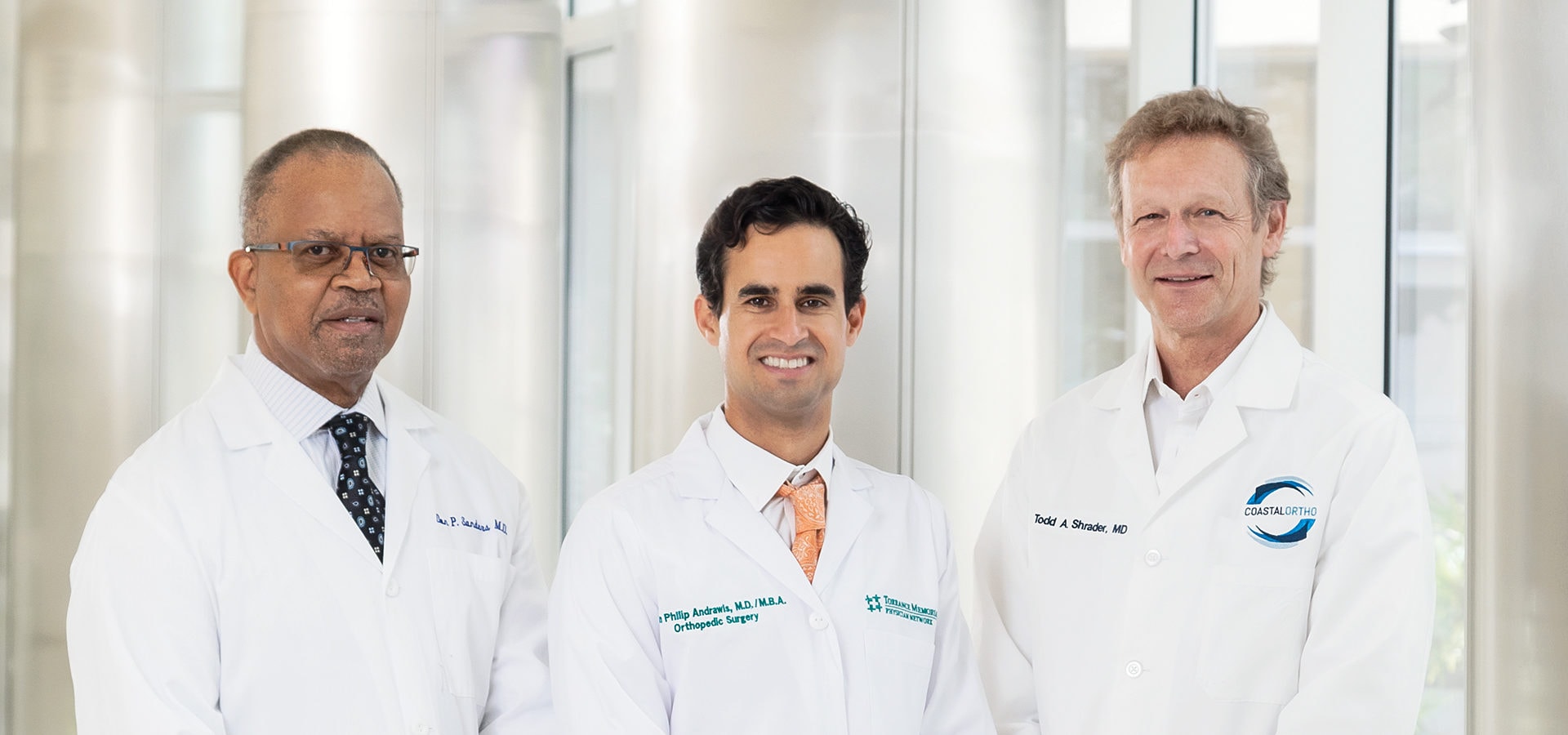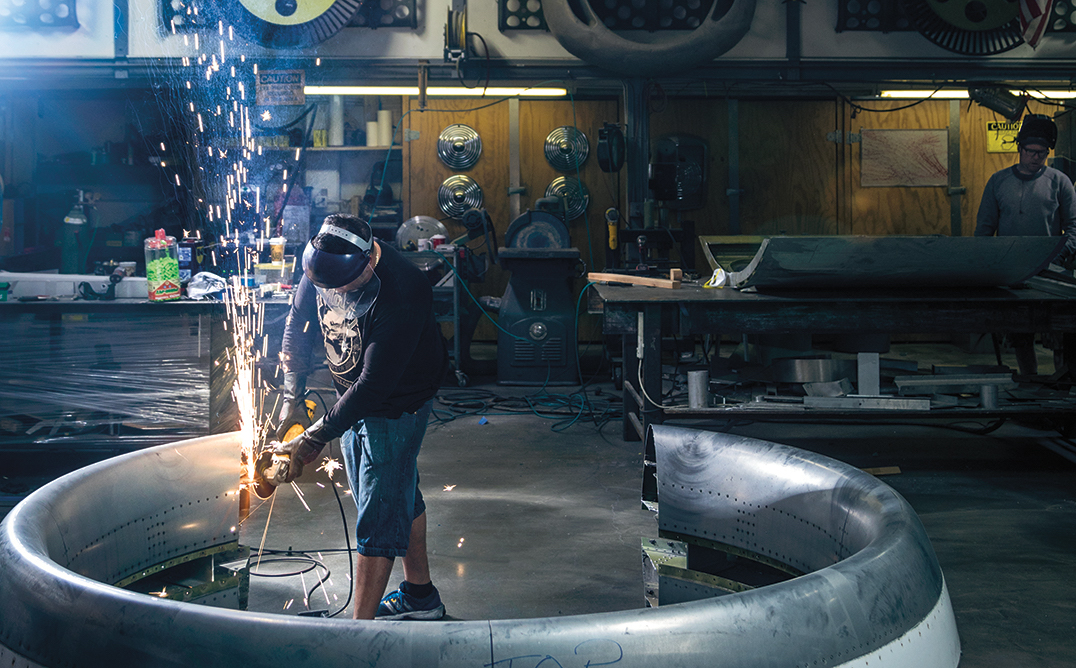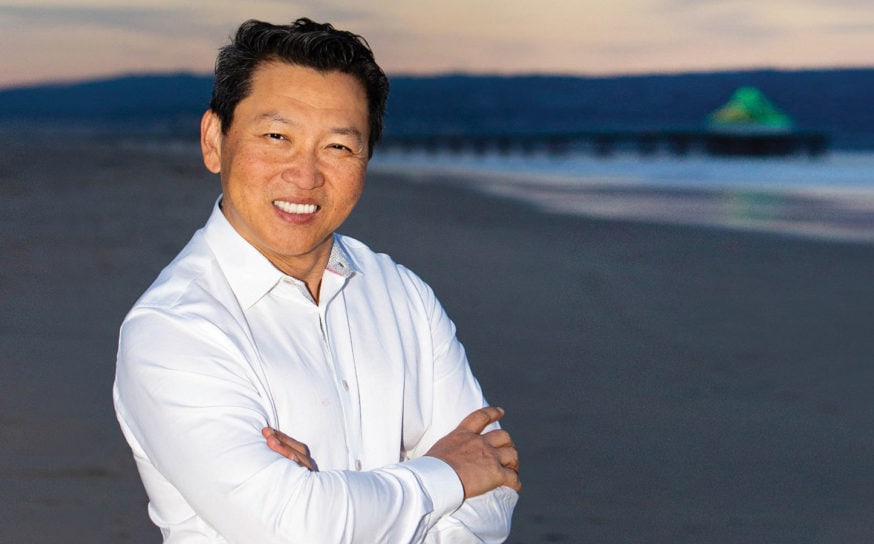
At the Top of Their Game
Joint replacement patients choose the torrance memorial Lundquist Orthopedic Institute for help in getting on with their lives.
- CategoryHealth
- Written byJohn Ferrari
- Photographed bySiri Berting
- L to R AboveOrthopedic surgeons Don Sanders, MD,
John Andrawis, MD, Todd Shrader, MD

Hip replacement patient Jill Lynch
Summer is here. You should be at the top of your game, but that joint pain isn’t going away. In fact, it’s getting worse. Whether it’s rheumatoid arthritis, osteo-arthritis or a sports injury, it may be time to consider orthopedic surgery for a partial or total hip, knee or shoulder replacement.
The good news is that joint replacement is one of the most successful and effective surgical procedures performed today, and the Torrance Memorial Lundquist Orthopedic Institute is at the forefront of advances in that field. Orthopedic surgeon Don Sanders, MD, helped pioneer the direct anterior approach for hip replacement surgery—a technique that leaves the muscle attachments intact, allowing patients to recover faster and more completely.
First performed at Torrance Memorial in 2004, the technique now accounts for 80% of hip replacements at the hospital. Similarly, the subvastus approach for knee replacement surgery avoids cutting into the quadriceps, speeding patient recovery.
Another even more recent innovation is robotic-assisted surgery. The Lundquist Orthopedic Institute started using the Mako Stryker robotic system last year to assist with knee replacement surgery. The robot doesn’t actually perform the surgery, but it allows surgeons to operate with greater precision—critical for achieving a successful total joint replacement, says Todd Shrader, MD, a joint replacement surgeon and sports medicine specialist.
A third advancement—to anesthesia and pain blocks—helps patients get back on their feet as soon as possible. Local pain blocks, similar to epidurals, are administered before and during joint replacement surgery.
Reducing pain and discomfort after surgery has a practical benefit. “Patients who get up sooner recover quicker,” explains orthopedic surgeon John Andrawis, MD. “They can usually have a physical therapist see them within a few hours of surgery.”
“We’ve been at the forefront of pain management,” adds Dr. Shrader. “Patients wake up with very little to no pain. We want patients to walk the day they have the surgery. It lowers the chance of getting a blood clot. Plus it helps them go home [faster], and it’s much better to recover at home.”
Most patients remain at Torrance Memorial overnight after joint replacement surgery, but some go home the next day or even the day of the surgery. Some patients—generally those younger than 70—may choose joint replacement surgery as an outpatient procedure.
Getting back on her feet after a bilateral hip replacement was a priority for 47-year-old yoga instructor Jill Lynch. “My hips started bothering me more than five years ago,” she recalls. “I did every possible thing I could do ahead of time, but eventually I had to admit to myself that there was something wrong and the only option was surgery. I did some research beforehand, and given how important my hips are to my career, I knew I wanted the direct anterior approach. And I knew that Dr. Sanders was the best.”
Jill was using a walker four hours after her surgery. Five days later she was walking without crutches, and after a month she and Dr. Sanders agreed she could resume her yoga work. “I feel fantastic,” she says. “I was in a lot of pain leading up to surgery. I feel like I have my life back.”
Torrance Memorial’s goal is to give every patient the best experience and easiest recovery possible with an extensive pre-op process. “Our patients have a monthlong presurgical process,” Dr. Andrawis says. “The goal is to educate people what to expect, which allows them to be more successful in their recovery.”
It’s no surprise that the Lundquist Orthopedic Institute has been ranked by U.S. News & World Report as one of the nation’s top centers for orthopedic surgery and has earned Blue Cross Blue Shield’s Blue Distinction Center designation for joint replacement and spine surgery. After all, Torrance Memorial patients like Jill don’t choose the Lundquist Orthopedic Institute just because it’s convenient; they choose it because it’s the best.
Torrance Memorial Medical Center
3330 Lomita Blvd., Torrance | 310-325-9110 | torrancememorial.org


























